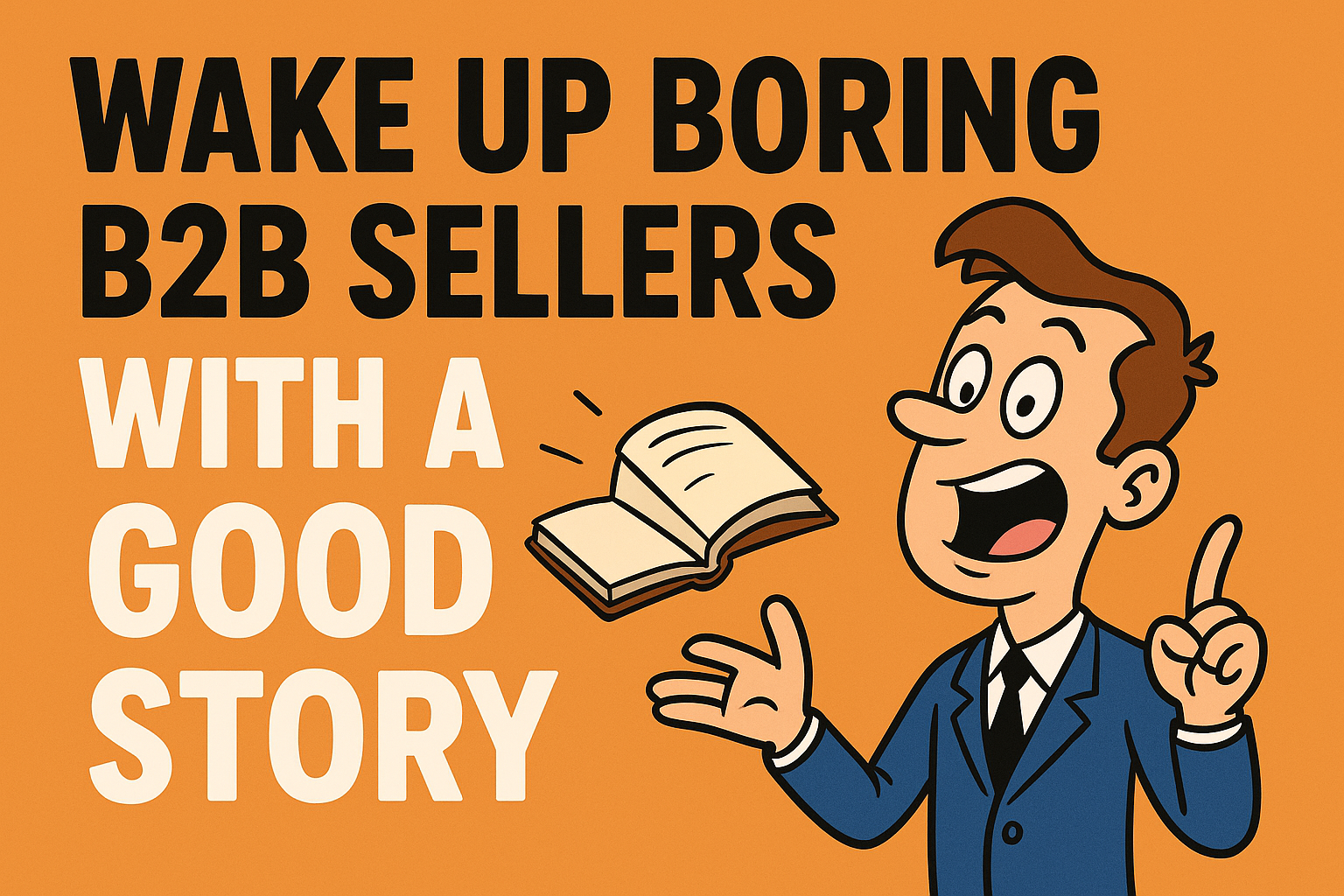Why B2B Buyers Snooze Through Decks (And How Story Wakes Them Up)
The sales director dimmed the lights, fired up a 30–slide deck, and unleashed a tidal wave of charts. Within minutes, the room resembled a conference on polite nodding and suppressed yawns. A question or two popped up, then silence. Interest flatlined.
A week later, another seller entered the exact same boardroom. No slides. No dimmed lights. Instead, a story: a warehouse drowning in orders, a missed shipment, a grumpy customer, and a staff stuck on overtime. Then came the twist—another site where the system was fixed, output soared, and complaints melted away. Suddenly, the CFO leaned in, the ops director perked up, and instead of awkward silence, the meeting ended with a clear next step.
Same problem. Same company. Different result. The difference? Story.
Why Story Works in B2B
Humans don’t make decisions like robots, no matter how much B2B sellers wish we did. We decide with feelings, then backfill with logic. Story hijacks attention, makes people care, and quietly wires them to believe. Researchers call it narrative transportation. I call it “how you stop people from scrolling LinkedIn during your pitch.”
And let’s face it—B2B buying is already a circus. Too many stakeholders, too much second-guessing, too many decks no one reads. A good story slices through the noise. It doesn’t just inform—it aligns.
What a Sales Story Is (And What It Definitely Isn’t)
A sales story isn’t about your logo’s “inspiring journey” or how many patents you hold. It’s not a kitchen sink of unproven claims. A proper sales story has:
A before state your buyer recognizes.
A trigger that makes staying the same impossible.
An after state with real proof, not fluff.
A clear next step that feels safe.
It’s structured, simple, and way more effective than dumping 40 bullet points on a single slide.
Three Story Frameworks That Actually Work
1. The ABT Frame (And–But–Therefore)
The Swiss army knife of sales stories. Fast to write, quick to deliver.
“And” = shared reality.
“But” = the problem.
“Therefore” = the fix.
Example: “Your firm runs on email and shared docs, and your staff are always on WiFi. But weak settings mean one hacked inbox could trigger fraud. Therefore we set up phishing-resistant sign-ins so you work anywhere without panic.”
Why it works: humans crave setup → tension → resolution. It’s basically Netflix for B2B.
2. PAS (Problem–Agitate–Solve) With Numbers
Classic, but sharper with data.
Problem: “Month-end records pile up across emails, papers, and portals.”
Agitate: “Deadlines slip, overtime explodes, clients lose faith.”
Solve: “We centralized the portal, bumped on-time submissions from 62% to 89%, cut overtime, and calmed everyone down.”
Why it works: raising the pain makes the solution feel like a rescue, not a sales pitch.
3. The 3 Act Customer Proof
Turn case studies into a story that doesn’t bore.
Act I: Before (the struggle)
Act II: Change (what you did)
Act III: After (numbers + happy quote)
Why it works: people remember stories they can retell—not pie charts.
Where to Put Data So It Doesn’t Kill the Vibe
Bad: “Downtime dropped 31%.”
Better: “Line 2 broke twice per shift. After monitoring + inspections, downtime fell 31%.”
Rule: start with a scene, then add data, then show the change. Data supports, story sells.
Five B2B Story Patterns to Swipe
The Safety Story → “Nobody cares about email security… until the CFO wires cash to a scammer.”
The Friction Story → “Your team spends a day hunting for updates. Here’s what happens when that disappears.”
The Capacity Story → “Backlog? Don’t hire. Fix the system. Here’s how another firm did it.”
The Innovation Story → “Scary new tech? Here’s how a peer tested it small and won.”
The Alignment Story → “Ops, Finance, Procurement all want different things. This is how one fix ticked every box.”
Mistakes That Kill Sales Stories
Starting with yourself (“Let me tell you about our founder’s garage”).
Drowning people in data before giving context.
Generic case studies that could be anyone.
Overlong quotes. One sentence beats five.
No next step. Entertainment isn’t revenue.
The Bottom Line
In B2B, story isn’t decoration. It’s the bridge from polite nods to real action. Stop presenting. Start storytelling. Build a story library, rehearse until it’s second nature, and you’ll see your conversations turn into conversions.

